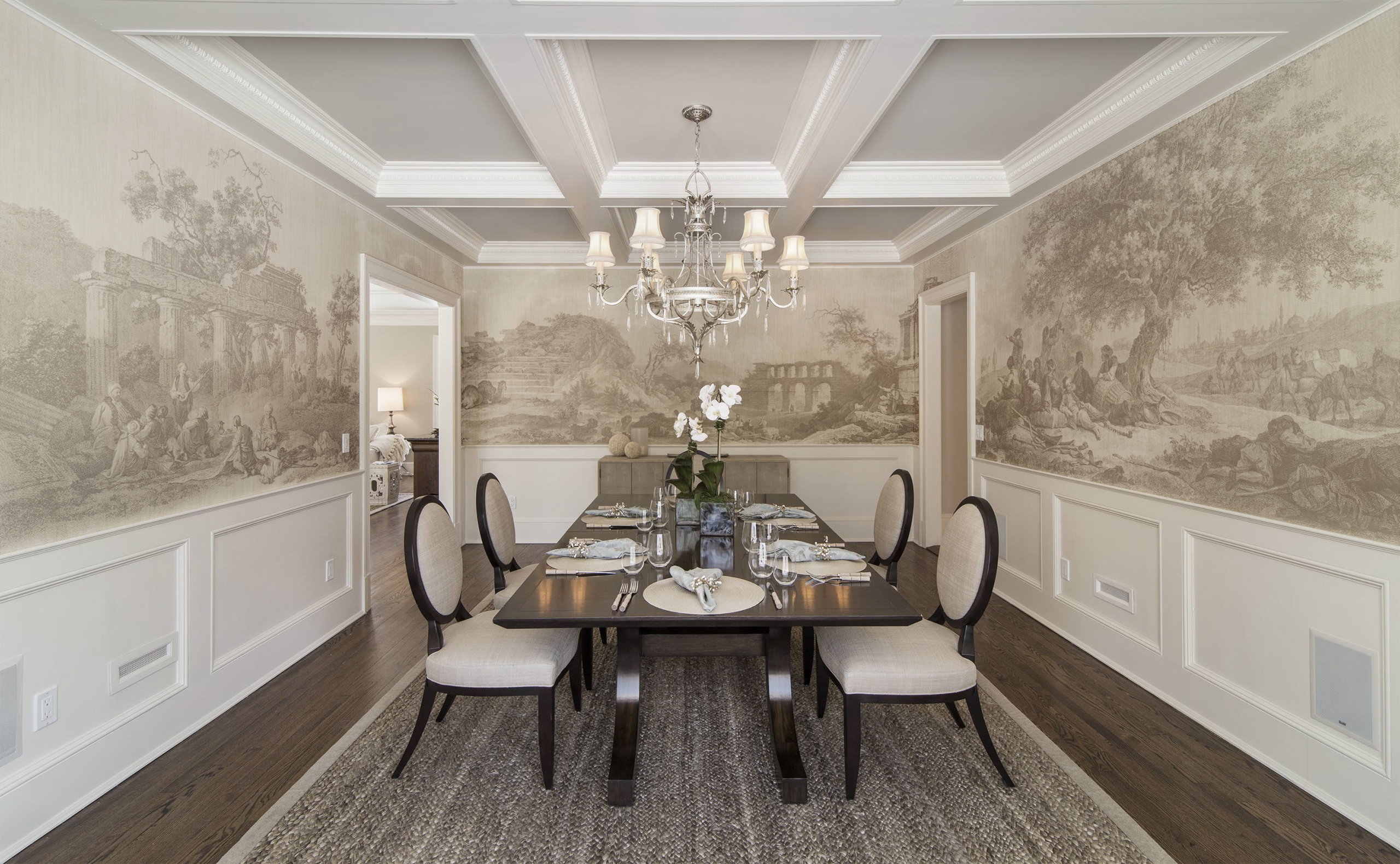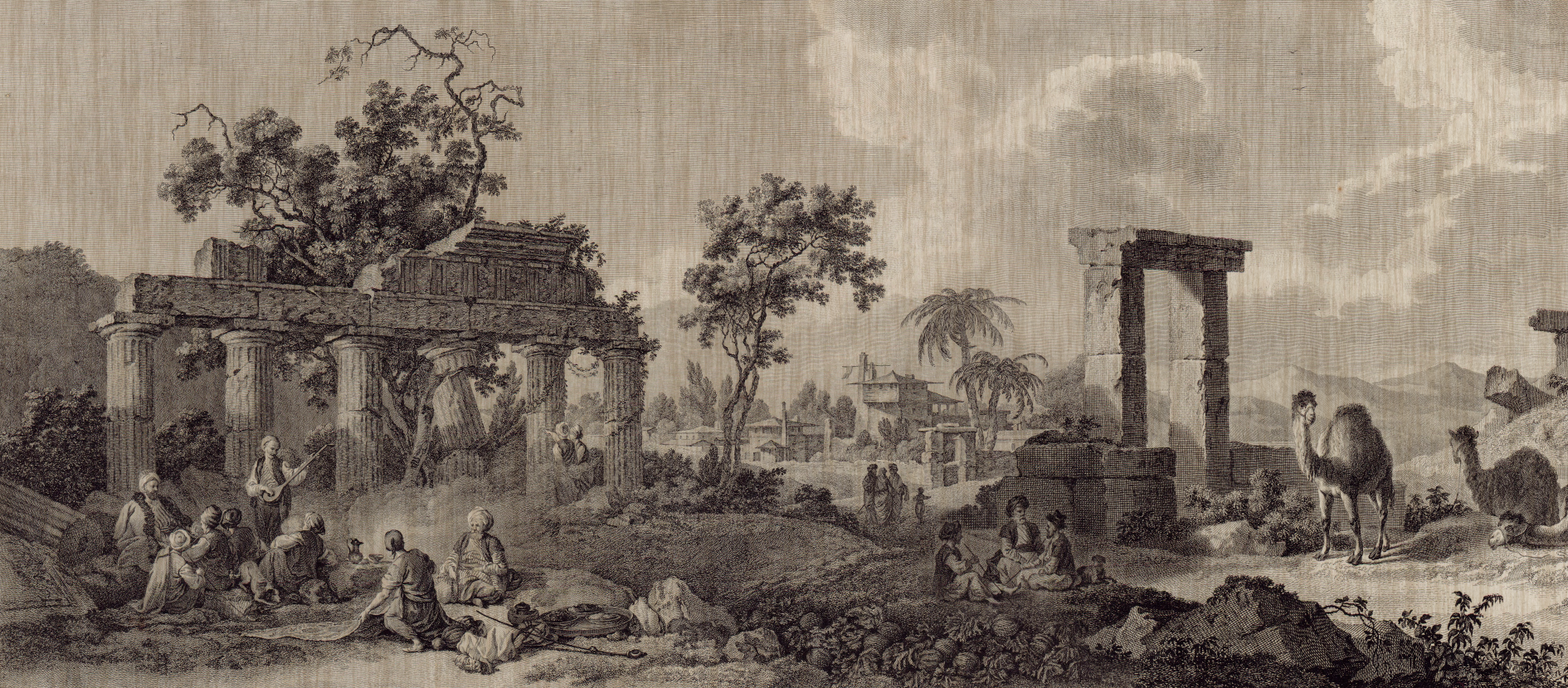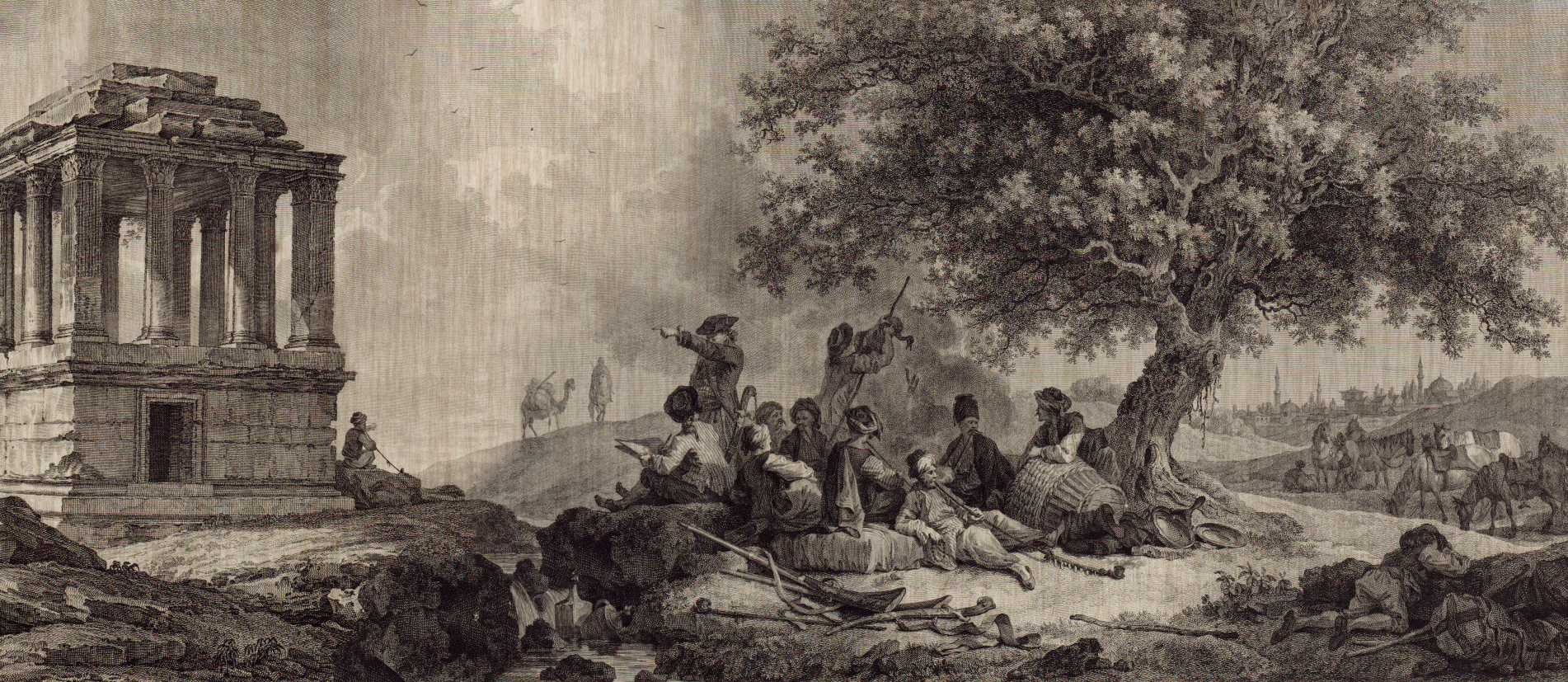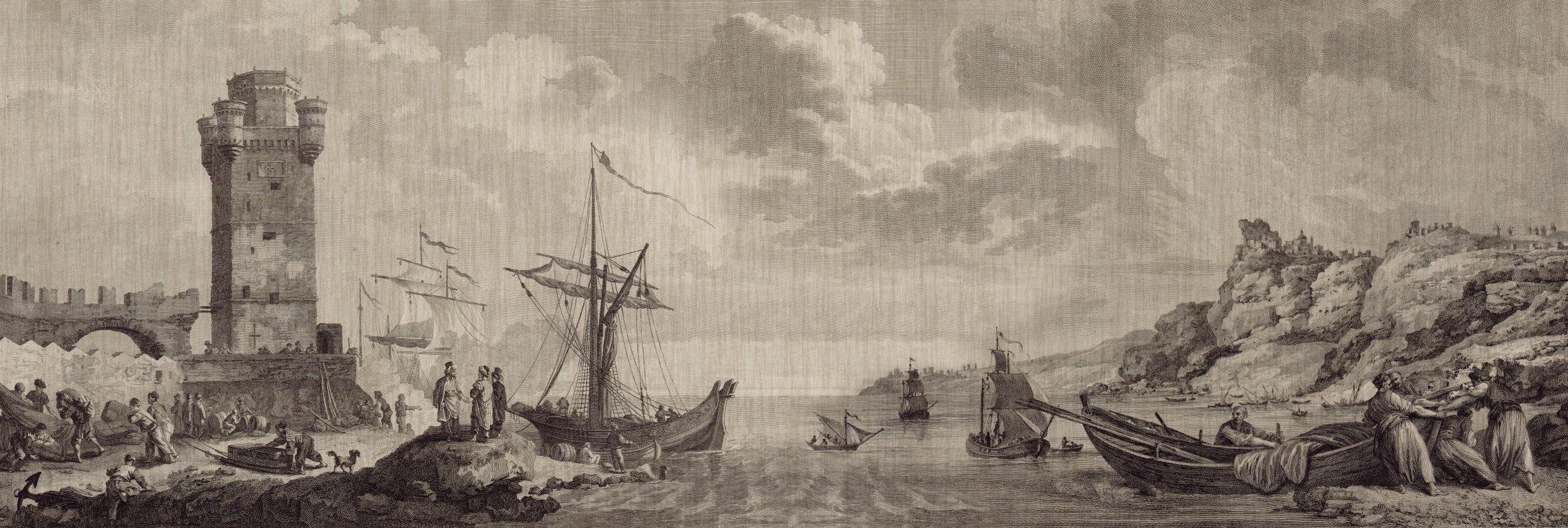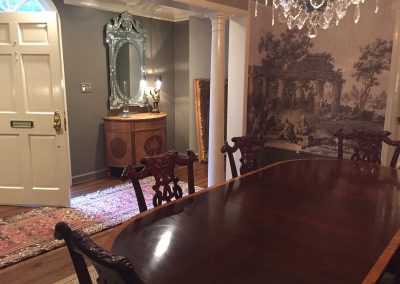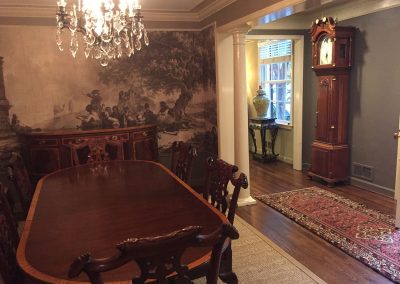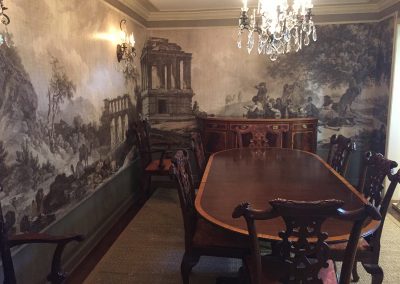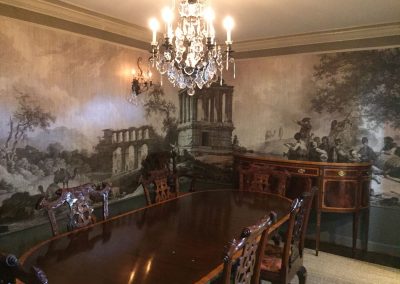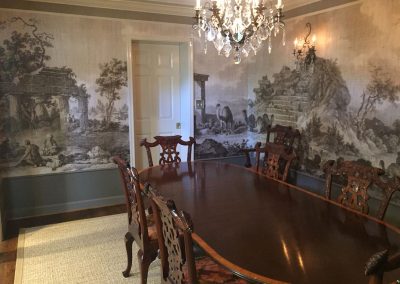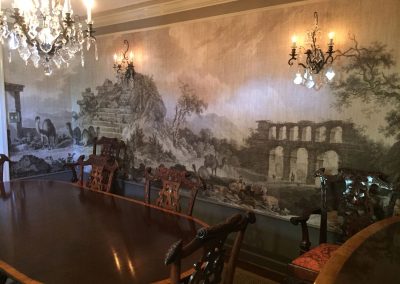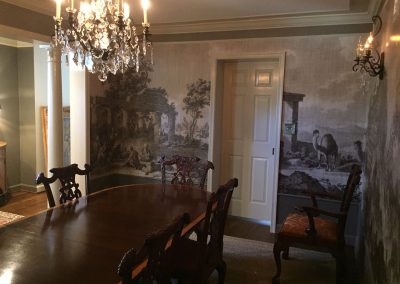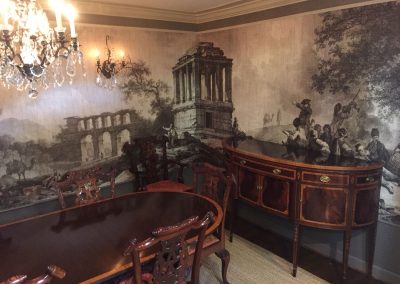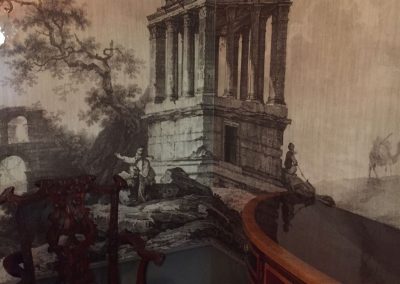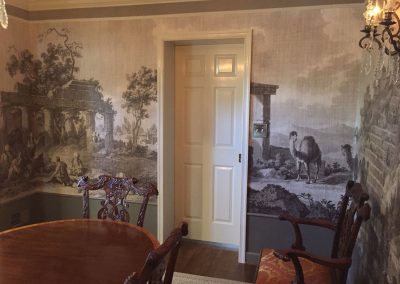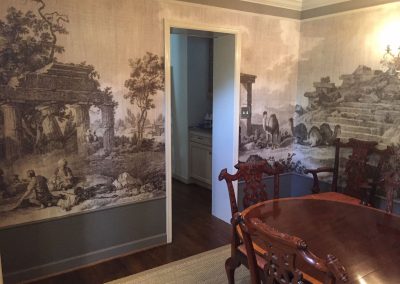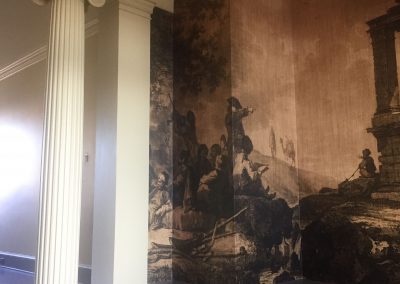Print Size by Height: 48″H x 329.14″W or 96″H x 658.28″W
Printed on pre-pasted latex-based wet strength wallcovering media for residential, hospitality, commercial and retail design. Class A, B1, and EN 13501 approved fire certifications.
We will customize to fit your needs, Color & Size, Email us to get an order started.
Compte de Choiseul-Gouffier (1752-1817) and the ‘Voyage Pittoresque de la Grèce: The panels illustrate the voyage which the comte de Choisel-Gouffier made into the Aegean Sea and along the Turkish coast frim Izmir (Smyma) to Rhodes in 1776. In 1782, upon his return to Paris, the comte de Choiseul-Gouffier (1752-1817), published, ‘Voyage Pittoresque de la Grèce’. The engravings contained therein, are based upon drawings by the talented artist J.B. Hilair, which he made in situ when he accompanied Choisel-Gouffier on his travels. The engravings give exact but inverted topographical views of landscapes and of antique ruins, and present a perfect combination of geographical interest with the harking back to antiquity and satisfying the ‘armchair travellers’ appetite for both ‘exoticism and realism’. There is a clear reference of each scene to a ‘planche’ in the compte de Choisel-Gouffier’s book.
Panoramic Wallpapers: The popularity of wall decoration in the form of scenic wallpaper in bourgeois salons and dining rooms, according to Yvonne Brunhammer, (see Le monde du papier peint, Paris, 1981), corresponds to a profound need in the individual, “the interior is not just the universe but also the étui of the private individual”.
Furthermore, according to the German writer Walter Benjamin, (1892-1940), in his seminal essay on Paris in the 19th century, ‘..The private individual who in his office has to deal with reality. Needs the domestic interior to sustain him in his illusions…The interior brings together the far away and the long ago. His living room is a box in the theatre of the world’. He also wrote that for 19th century collectors, scenic wallpapers enabled him them ‘to dream (their) way not only into a distant or bygone world but also into a better one’.
The 19th century bourgeoisie were fascinated by scenic wallpaper which depicted panoramic wallpapers over a whole series of lengths. ‘From a modest boarding house (described by Balzac) to the Goncourt’s dining room’, these papier peints could be found. They were mainly hung in salons or dining rooms and less commonly in bedrooms The walls became a place of escape and the art of papier peint emerged in the late 18th century and its origins are shrouded in mystery. Sebqastien Le Normand wrote that first article on wallpaper in 1822 and concluded that ‘the true reason that it has been omitted from general descriptions of the arts is due to secrecy that the artists have consistently maintained concerning their methods and to the difficulty in entering their workshops encountered by anyone who might have described them’.

